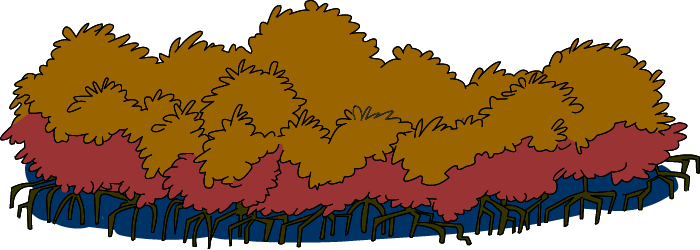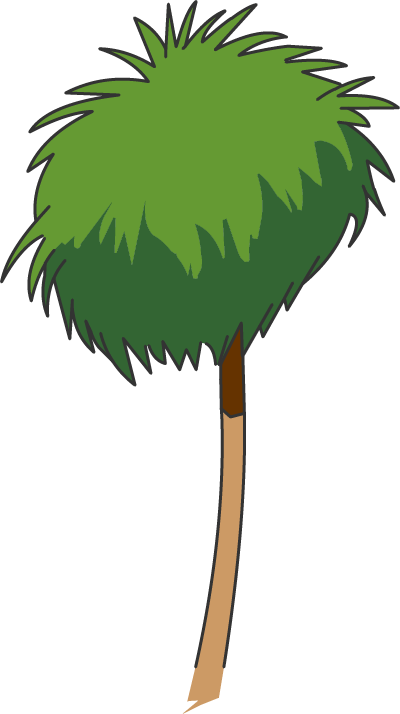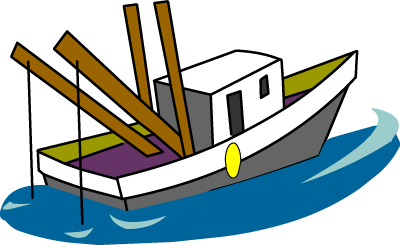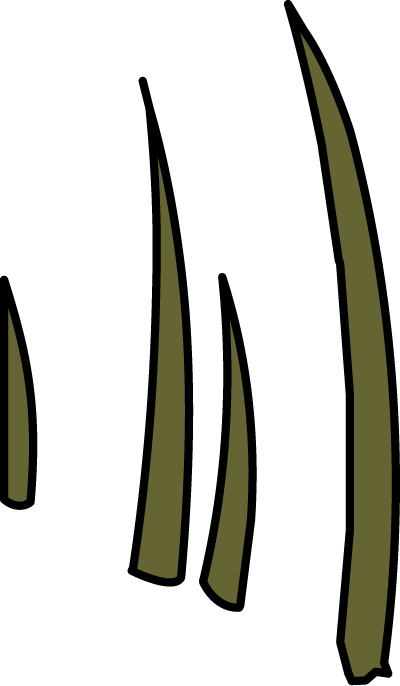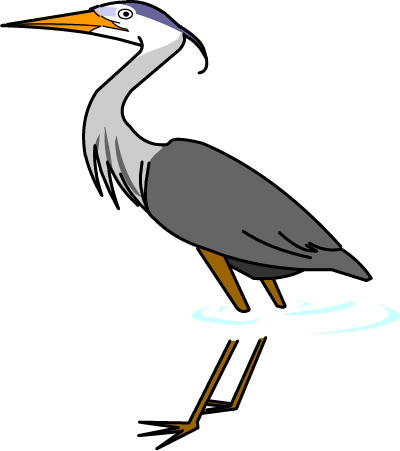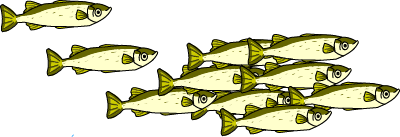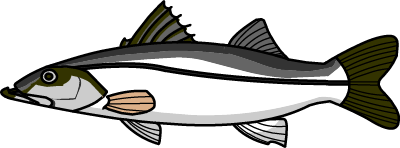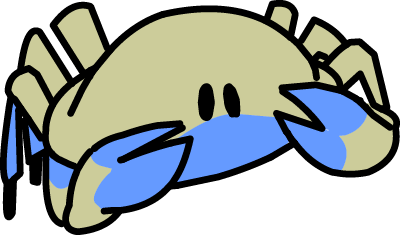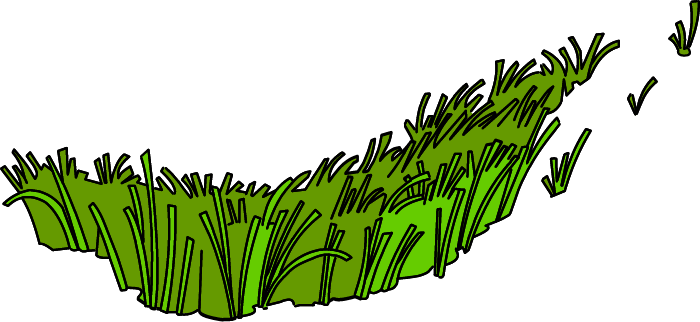Estuaries
Find out more about what can be found in our estuaries by clicking around the screen. You will find 21 clues to learn more about estuary habitats. When you are finished with this page you can learn more about other habitats in Florida and take the quiz. This webpage is best viewed at a minimum width of 1250 pixels.

Mangrove roots
Wow! A mangrove tree is a busy place. The roots of the red mangrove provide a nursery area to young fish where they can find food and hide from predators. The roots prop up the red mangrove and provide a place for oysters, barnacles and other animals to attach and grow. Mangrove branches provide a place for birds to rest and nest.

Food chain
There are food chains in every ecosystem. People become part of the aquatic food chain when they eat fish, oysters, clams and other things from a lake, river or ocean.

Saltmarsh grasses
Saltmarsh grasses grow in areas around the estuary that are partly covered with water when the tide comes in and not covered when the tide goes out.

Mangrove trees
Mangrove trees grow along the shores of estuaries and provide valuable habitat for many animals. They can survive in the brackish water of the estuary.

Photosynthesis
All organisms need energy in one form or another, but only plants can use energy from the sun to make food. They use sunlight to combine water and carbon to manufacture food. Mmmm. Oxygen is given off when plants make food. Boy, plants are great.

Primary producers
Plants are called primary producers because they provide food for all animals. So many plants live in and around the estuary that there’s plenty of food for animals of all sizes.

Leaves
Mangrove leaves are tough, and difficult to eat. Not many animals will eat them on the tree, but when they fall into the water and begin to decay, the leaves become food for small fish and other creatures. The mangroves are primary producers. The decaying plant matter is called detritus.
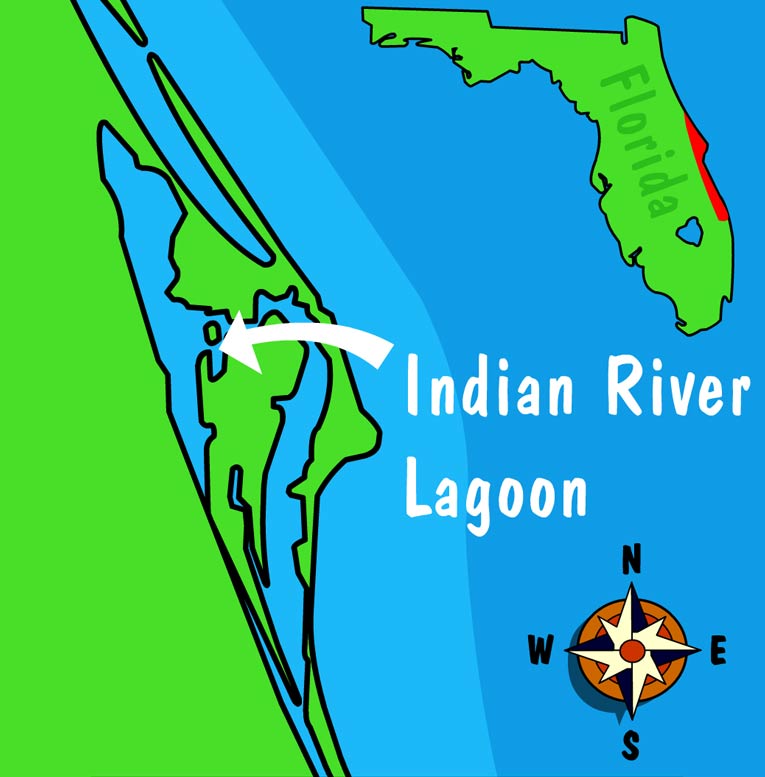
Boat
The Indian River Lagoon is a very long, important estuary along the east coast of Florida. It’s home to more than 4,300 species of plants and animals, more than any other estuary in the United States.

Dolphin
Dolphins are top consumers that come into the estuary to catch fish. They like to eat mullet because the mullet live in schools, and that makes them easier to catch.

Producers
Producers are living things that make their own food by changing energy from the sun into food. Plants are producers. Examples of producers in the estuary are seagrasses and mangroves.
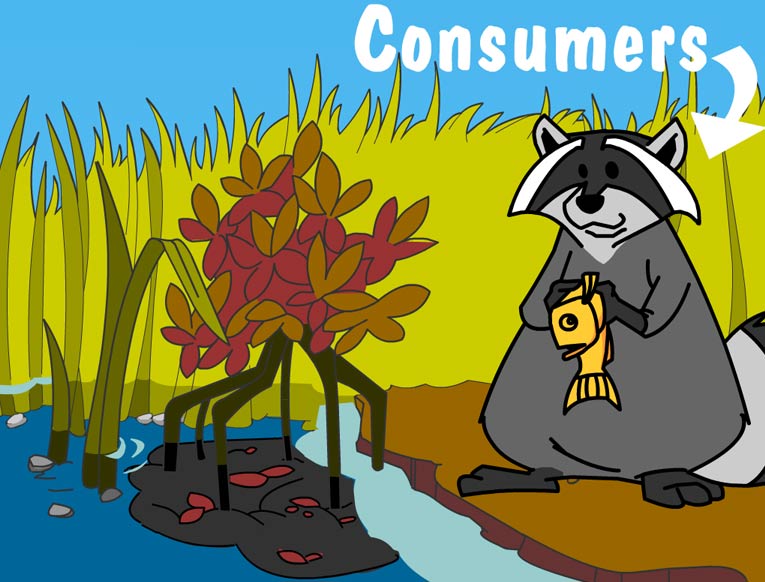
Consumers
Consumers are living things that get their energy by eating plants or other animals. Examples of consumers in an estuary are oysters, fish, herons, dolphins and crabs.

Heron
Blue herons are consumers because they cannot make their own food the way plants do. Consumers must get their food from either plants or other animals.

Habitat
A habitat is the place where plants and animals live and grow. Florida has many different types of habitats that provide the water, shelter, food and space needed by the living things found there. The amount of water available in a habitat is one thing that determines which plants and animals can live there.

Mullet
Mullet are called primary consumers because they eat plants called algae, and detritus. Many living creatures, including people, like to eat mullet.

Snook
Snook are called secondary consumers because they eat other animals.

Crab
Blue crabs are scavengers that will eat anything they can find, even decaying leaves called detritus and animal remains.

Decomposers
Decomposers are fungi, bacteria and insects that get their energy by breaking down wastes and dead organisms. They cause dead things to decay. An example of a decomposer in the estuary is the microorganisms found on detritus.
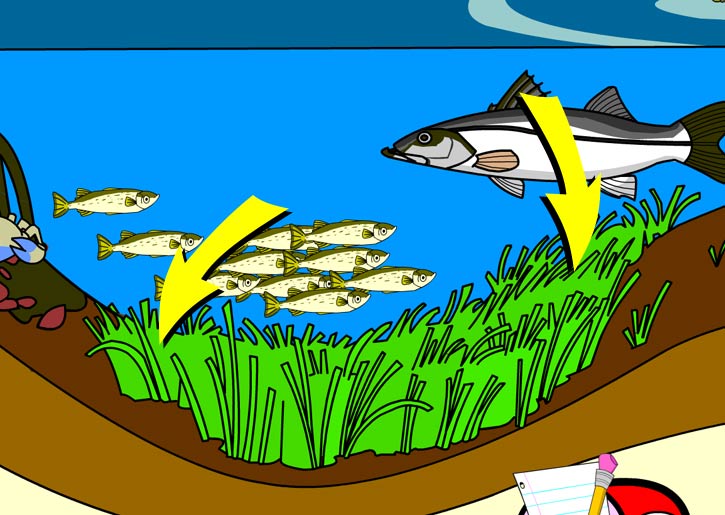
Seagrasses
Seagrasses are submersed aquatic vegetation that live in shallow salty water where there is plenty of light from the sun. These primary producers make food and provide shelter for animals that live in the estuary and for visiting animals that come just for food.

Book
Freshwater enters the estuary through rivers, creeks and canals. Salt water enters from the ocean through narrow opening between barrier islands that parallel the coast. The Indian River Lagoon seems like a river, but it’s not. Hundreds of miles of seagrass beds are found along Florida’s shores. Seagrass beds are submersed aquatic vegetation found in salty water. When healthy, these beds of seagrass provide food and habitat for a variety of wildlife, including fish, blue crabs, water birds and manatees. The seagrass beds also act as nurseries that protect and provide food for young fish and other animals. These grasses add dissolved oxygen to the water, which aquatic animals need to breathe. The health of seagrass beds can indicate the overall health of the aquatic system. An acre of healthy seagrass provides habitat for 50 million small invertebrates and 40,000 fish.

Oysters
Oysters are found stuck to a hard surface in oyster beds. Since they can’t move around to get food, they open their shells just a little and filter food out of the water. Can you imagine having to stay in one place your whole life?

Primary consumers
Oysters are called primary consumers because they get their food by filtering the water. They are also called filter feeders.





